CONCORDIA LANGUAGE VILLAGES bring the world to NORTHERN MINNESOTA
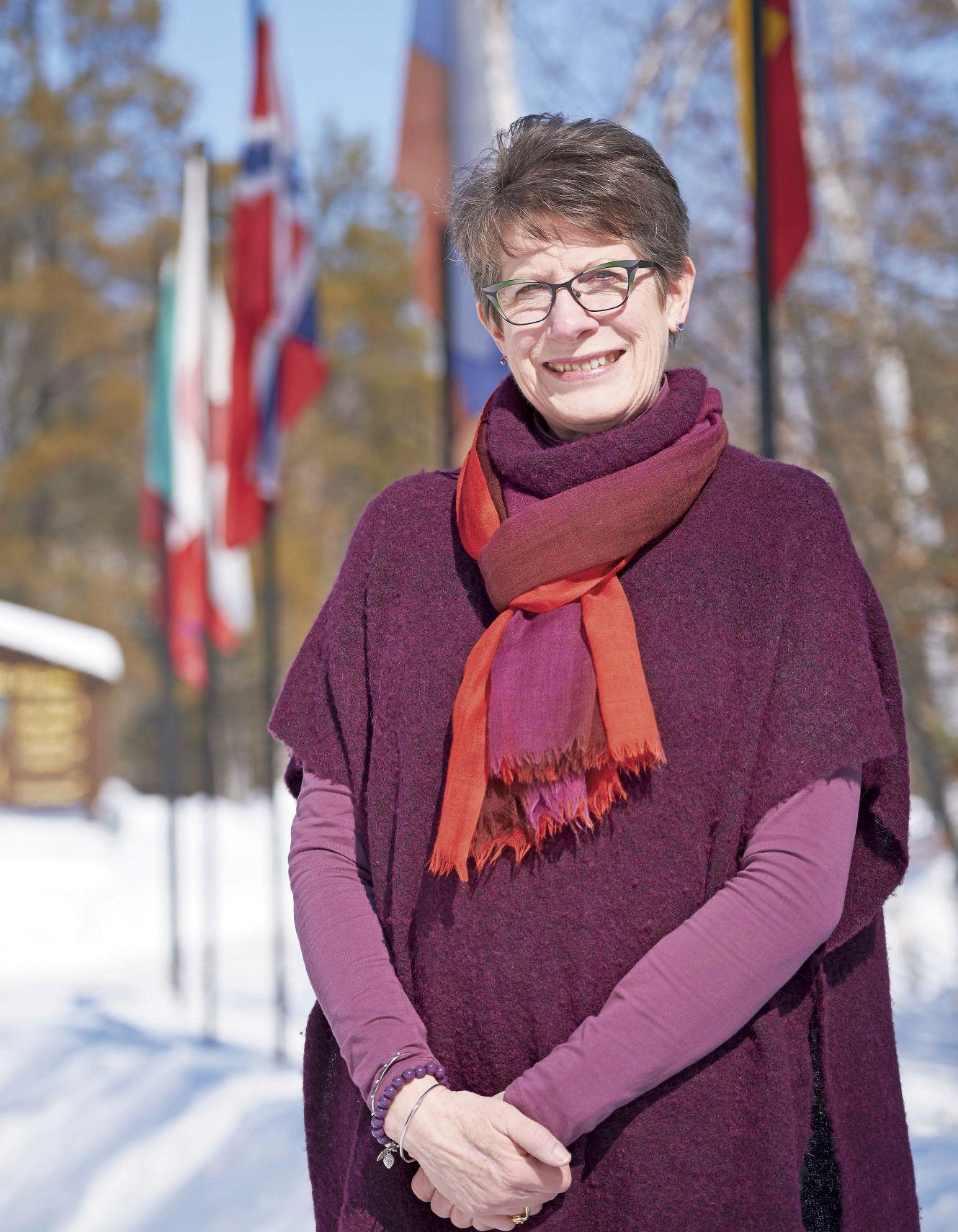
PREMIER BUSINESS MAGAZINE OF THE NORTHERN PLAINS | APRIL 2019
PAGE 16
CHRISTINE SCHULZE EXECUTIVE DIRECTOR





PUT MIDCO INTERNET TO WORK FOR YOU TURN YOUR PASSION INTO PROFITS. L ET US DO THE REST. Count on Midco® Business internet to keep you connected with flexible and reliable service. Whether you need connectivity for emails, e-commerce, in-store credit card transactions or a custom network for multiple locations, Midco has the business technology that works for you. READY TO MIDCO? LET’S GO. M idco com/Business • 1.800.888 1300 © 2019 Midcontinent Communications. All rights reserved.


Buildsomething great. MSNMoney’s50Mos tAdmiredCompaniesinthe U.S. 100% Employee -O wned ESOP|Inc.Magazine’sBes tPlaces to Work Yo ub ut te rb elie ve th et im ei sr ig ht to bu il dab us in es st ha tk ee ps it sc us to mers co mi ngbac kf or mo re —l ik e th eToa sted Fr og, whi ch tu rne dc he es yp ic kl es in to ad el ica cy an dh as beenfe at ur ed on th el ik es of th e Fo od Ne tw or ka nd th eTrave lC ha nn el .Todosoy ou ne ed pa ss iona te le ad ers hip ,s ta ff th at tr uly se rv e, an dJ LG Ar ch it ect s. Se ew hy th eToa sted Fr og is to ad -a ll ya we so me at jl ga rc hi te ct s. co m/ To asted -F ro g












5 Our2019Business Trends WebinarSeriesis designed to keep youinformedoninnovative businessand taxstrategies.Thesefree webinars runthroughouttheyear,butcheckoutApril’s sessionsbelow! Reve nue Re cognition Ru le s Th ur sday,A pril 18 |12–1p .m. Internal Audi t:Do Yo uN eedHelp? Tu esday,A pril23 |12–1p .m. SuccessionPlanning: St ar tP lanningNow Th ur sday,A pril25 |12–1p .m. Visit eide ba illy. co m/busine ss-tre nds toseethefullschedule,registeror tolearnmore.
INSPIREDIDEAS. TARGETEDRESULTS. 2019
BUSINESSTRENDS WEBINARSERIES
LEARN SMARTER. EARN FASTER.
Set your future in motion at NDSCS in Wahpeton. With 250+ free student events and 5 NJCAA teams to root for, you’ll get the full college experience in just 2 years. And when you live on campus, you’re just steps away from convenient dining options, performing arts opportunities, student clubs and more. Become a Wildcat and discover all NDSCS-Wahpeton has to offer!
GET STARTED AT NDSCS.EDU.

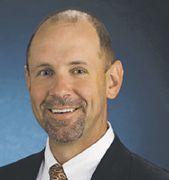




Sponsors:






































































































































































6 TWITTER.COM/PRAIRIEBIZ FACEBOOK.COM/PRAIRIEBUSINESS PRAIRIEBUSINESSMAGAZINE.COM INVESTING IN Y’S NA S Pifer’s & Fargo, North Dakota Holiday Inn Begins February 1! Register Online - GreatPlainsLandExpo.com Call Pifer’s Auction & Realty - 877.700.4099 Keynote Speakers WEDNESDAY, JUNE 26, 2019 REGISTRATION 8:00 A.M. - 5:00 P.M. Present the greatplainslandexpo.com • 877.700.4099 Chad Greenway Dr. Bruce J. Sherrick Dennis Gartman “Leadership Rooted in Agriculture” Farmer Former All Pro Linebacker, Founder of the Lead the Way Foundation • South Dakota Professor of Land Economics, & Director of the TIAA Center for Farmland Research • University of Illinois Editor and Publisher, The Gartman Letter • Virginia “Headwinds & Tailwinds in Farmland Markets” “Dynamics & Trends of a Changing Market”
• $99 Early Bird Rate - Ends May 31 •$125 Regular Rate Registration Includes: • All-day Access • Seminars, Presentations & Exhibitors • Breakfast & Lunch • So Much More! YOUR
IN MOTION.
FUTURE SET
For most commuters near New Town, ND, taking the HWY 23B bypass will save some time, but when Senior Transportation Engineer, Tim Arens, PE, designed this route, he was more concerned with saving lives.
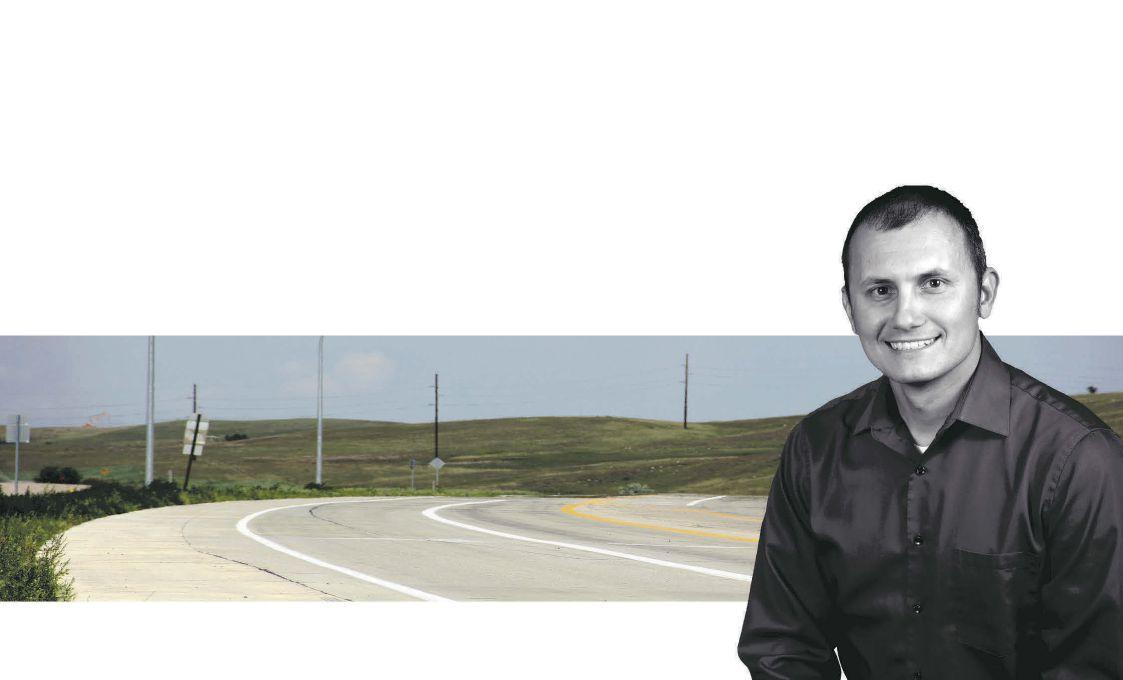
Developed to relieve heavy truck traffic through town, this highway provides a safer route protecting motorists and pedestrians alike.
Tim’s passion is protection; for the residents of New Town and those in every community we serve.
To learn more about the New Town Northeast Truck Reliever Route, visit our website at www.ackerman-estvold.com/projects

7
BA NK IN G :: PA YR OL L RE TI RE ME NT :: BENE FI TS FI ND YO UR PA TH TO BUSI NE SS EX PA NS ION .
l ta ke a lo ok at yo ur enti re fin anci al pict ur e as it is to day. An d we’l l he lp yo u ma ke go od de ci sion s th at wi ll point yo ur bu sine ss in the right dir ec tion . Wh er ev er yo u wa nt to go, yo u’ llfi nd yo ur way wi th Al er us as yo ur gu id e. Ca ll us at 80 0. 27 9. 320 0 or fi nd us at Al er us .com
We’l
31 CONSTRUCTION CORNER
IN OCTOBER, A BRAND-NEW AND MUCH-IMPROVED AIRPORT IN WILLISTON WILL WELCOME THE WORLD TO WESTERN NORTH DAKOTA



ON
THE COVER:

8 APRIL 2019 VOL 20 ISSUE 4 FEATURES DEPARTMENTS 27 TECHNOLOGY SMALL-TOWN CONNECTIONS BROADBAND SERVICE LINKS PRAIRIE BUSINESS COMMUNITIES WITH WORLD MARKETS AND TRADE STACKABLE CREDENTIALS SHORTER-TERM CERTIFICATES PROVE THEIR WORTH FOR EMPLOYERS AS WELL AS STUDENTS MAGNETS FOR MILLENNIALS THANKS IN PART TO HOUSING PRICES, THE REGION’S METROS ARE POPULAR DESTINATIONS FOR COLLEGE-EDUCATED YOUNG ADULTS 10 EDITOR’S NOTE BY TOM DENNIS 12 benefits HOW TO BOOST PARTICIPATION IN YOUR COMPANY’S RETIREMENT PLAN BY ROB WOYTASSEK BUSINESS INSIDER 16 SOLDIERS, SAILORS AND AIRMEN ARE AMONG THE ‘VILLAGERS’ NOW STUDYING AT CONCORDIA LANGUAGE VILLAGES, SAYS CHRISTINE SCHULZE, EXECUTIVE DIRECTOR 14 LEADERSHIP BUILDING A CULTURE OF TRUST PAYS DIVIDENDS IN EMPLOYEES’ LOYALTY AND PRODUCTIVITY BY SARAH MEUSBURGER 34 PRAIRIE PEOPLE 36 INSIGHTS & INTUITION 38 BY THE NUMBERS 20 HIGHER EDUCATION 24 REAL ESTATE TWITTER.COM/PRAIRIEBIZ FACEBOOK.COM/PRAIRIEBUSINESS PRAIRIEBUSINESSMAGAZINE.COM prairie people VISIT WWW.PRAIRIEBUSINESSMAGAZINE.COM TO SEE THESE AND OTHER NEW HIRES, PROMOTIONS AND AWARD WINNERS IN THE REGION. TAYLOR POPE MEGAN SWANSTON HAS BEEN HIRED BY NEXUS INNOVATIONS OF FARGO AND BISMARCK, N.D., AS A SOLUTIONS CONSULTANT. POPE IS A NORTH DAKOTA STATE UNIVERSITY GRADUATE WITH SIX YEARS OF EXPERIENCE AS A TECHNOLOGY SOLUTIONS PROFESSIONAL. HAS JOINED ENGINEERING FIRM KLJ IN THE COMPANY’S BISMARCK OFFICE. SWANSTON WILL SERVE AS A PROJECT ASSISTANT, HAS CLERICAL AND CUSTOMER-SERVICE EXPERIENCE AND EARNED HER BACHELOR’S DEGREE AT THE UNIVERSITY OF NORTH DAKOTA. THIS IS ‘RURAL BROADBAND’ IN ACTION, AS A CREW LAYS FIBER-OPTIC
CABLE ACROSS A NORTH DAKOTA FARM FIELD. PAGE 27. IMAGE: BROADBAND ASSOCIATION OF NORTH DAKOTA
TABLEOFcontents
CHRISTINE SCHULZE IS EXECUTIVE DIRECTOR OF CONCORDIA LANGUAGE VILLAGES IN BEMIDJI, MINN. THE RESPECTED LANGUAGE-IMMERSION PROGRAM NOW TRAINS DEPARTMENT OF DEFENSE PERSONNEL AS ONE OF NINE OFFICIAL LANGUAGE TRAINING CENTERS. IMAGE: NICK NELSON FORUM NEWS SERVICE CONCORDIA LANGUAGE VILLAGES bring the world NORTHERN MINNESOTA

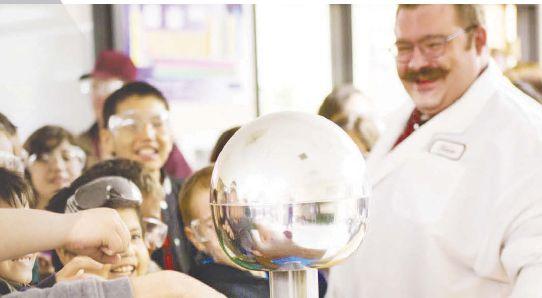













































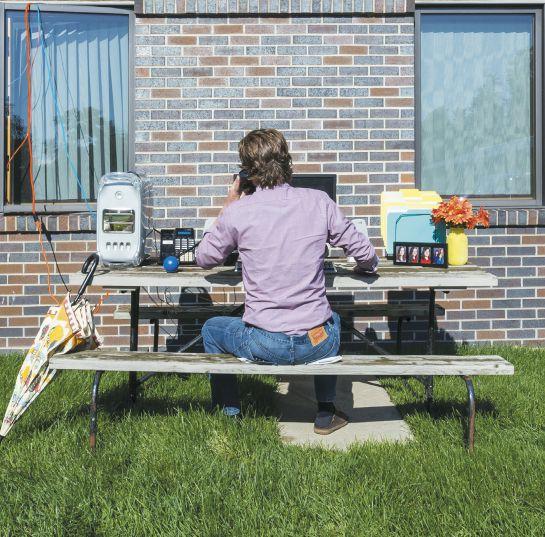

9 PROUD
OUR COMMUNITY www.undeerc.org ENERGY & ENVIRONMENTAL RESEARCH CENTER Our multidisciplinary team of over 200 provides practical, pioneering solutions to the world’s energy and environmental challenges. Chamber Membership Directory AD 8 2018.indd 2 8/16/2018 12:51:09 PM Formoreinformation,contact RYAN VANDEKIEFT SDState TransferStudentCoordinator Ryan.Vandekieft@sdstate.edu |605-688-4121 Earn yourassociate’s degree at LATI, thenadvance to yourbachelor’sdegree at SDSU. 5Reasonstocontinueon for yourbachelor’sdegree at SDSU: Achieveevengreatersuccess Advanceinyourcareer Maximizeyourcredittransfer Lessmoneyandlesstime Onlineoptionsavailable OPENING DOORS! Youshouldseean architectaboutthat. GROWING PAINS? FacilityAssessments n MasterPlanning n Building/SiteDesign WidsethSmithNolting.com
MEMBERS OF
The gospel according to St. Steven
I’m with Steven Pinker. The Harvard professor of psychology preaches “the gospel of human progress,” as the Chronicle of Higher Education put it. And he has taken heat for it, by people who refuse to believe the statistics Pinker presents – statistics documenting broad gains in life expectancy and declines in poverty and violence, worldwide.
In support of Pinker’s conclusion, I’d submit the example of America’s Upper Midwest. And I’d note the stories in this month’s Prairie Business that highlight the trend.
One such story describes the growing appeal to millennials of Fargo-Moorhead, Sioux Falls and the region’s other metros. Real estate is a big part of that appeal; as the story notes, our housing stock and first-time homebuyer programs make homeownership surprisingly realistic, even for some twentysomethings.
But as important are the metro areas’ huge gains in quality of life, including arts initiatives, new restaurants, downtown improvements and more. We’ve described those changes in these pages before – and you can count on us doing so again, because they’re such important contributors to the region’s prospects and health.
Another story notes big changes in an industry not known for its flexibility: higher education. A few years ago, an adult learner who wanted to change careers might have to stop working to pursue a new degree. These days, in contrast, certificate and other programs – many of them online – have made acquiring new skills and credentials easier than ever before.
Then there’s Concordia Language Villages, which attracts students from all 50 states to the Minnesota northwoods, summer after summer and year after year. OK, so studying Russian or Norwegian at America’s premier language and cultural immersion program may not boost life expectancy. But it sure can boost life satisfaction – and that counts, as Pinker likely would agree.
Good reading, Tom Dennis
I welcome your feedback and story ideas. Call me at 701-780-1276 or email me at tdennis@prairiebusinessmagazine.com.
PUBLISHER KORRIE WENZEL

AD DIRECTOR STACI LORD
EDITOR
TOM DENNIS
CIRCULATION MANAGER BETH BOHLMAN
LAYOUT DESIGN ANNA HINSVERK
ACCOUNT MANAGERS
NICHOLE ERTMAN 800.477.6572 ext. 1162 nertman@prairiebusinessmagazine.com
PETER FETSCH 800-477-6572 ext. 1172 pfetsch@prairiebusinessmagazine.com
Prairie Business magazine is published monthly by the Grand Forks Herald and Forum Communications Company with offices at 375 2nd Avenue North, Grand Forks, ND 58203. Subscriptions are available free of charge. Back issue quantities are limited and subject to availability ($2/copy prepaid). The opinions of writers featured in Prairie Business are their own. Unsolicited manuscripts, photographs, artwork are encouraged but will not be returned without a self-addressed, stamped envelope.
SUBSCRIPTIONS
Subscriptions are free www.prairiebusinessmagazine.com
ADDRESS CORRECTIONS
Prairie Business magazine Box 6008 Grand Forks, ND 58206-6008
Beth Bohlman: bbohlman@prairiebusinessmagazine.com
ONLINE www.prairiebusinessmagazine.com
TWITTER.COM/PRAIRIEBIZ FACEBOOK.COM/PRAIRIEBUSINESS PRAIRIEBUSINESSMAGAZINE.COM 10 editor’snote
TOM
701.780.1276
DENNIS tdennis@prairiebusinessmagazine.com
EDITOR
APRIL 2019 VOL 20 ISSUE 4
You’reInvited


Thursday, May 16 th 5-8pm



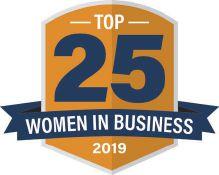




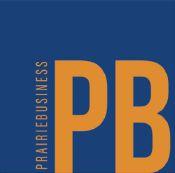
11
by Thursday,
at
Prairie Rose Ballroom Avalon Events Center 2525 9th Ave. S. Fargo, ND www.jobshq.com Make your
to celebrate the 2018 40 Under 40, 2019 Top 25 Women in Business and 2019 Leaders & Legacies Recipients! Doors open at 5pm | Presentation begins at 5:30 Please RSVP
May 2
http://bit.ly/PBCelebration Sponsored by:
job search simple.
Three ideas for boosting participation in your company’s retirement plan
By Rob Woytassek
FARGO, N.D. – Some years ago, a company came to me concerned because too few employees were taking part in its 401(k) retirement plan. At the time, though the company was offering employees a 50 percent match on the first 6 percent of employees’ contributions, fewer than 70 percent of employees were participating in the benefit.
The company’s goal was to help its employees as best as possible to become retirement-ready. So, during one of our semiannual plan reviews, we took a look at three ways to increase participation, with a goal of surpassing industry participation averages while increasing the average contribution percentage for employees.
Here are the strategies we examined:
AUTOMATIC ENROLLMENT AND CONTRIBUTION INCREASES
More and more companies are using auto-enrollment to boost participation in retirement plans. In my client’s case, the company transitioned from employee-elect participation to auto-enrollment, which means that each year, those eligible but not contributing will be auto-enrolled unless they opt out of participating in the retirement plan.
Second, the company began offering “automatic contribution increases” to its employees.
Similar to automatic enrollment, this is an automatic feature that occurs each year unless the participant opts out.
The participant’s contribution percentage is increased by 1 percent until it hits the plan’s target, which is often 10 percent. This is a particularly important feature that helps make sure participants are on the proper savings and financial-fitness track.
Generally, individuals should save between 10 and 15 percent of their income to meet their retirement planning goals. This feature helps to guide them down this path.
Adding these automatic features had a dramatic effect on the company’s overall participation rate, as well as the average participant contribution. Within four years of implementation, plan participation increased from under 70 percent to more
than 95 percent, and the average participant contribution increased from under 5 percent to more than 8 percent.
MODIFY YOUR MATCH
Have you evaluated your 401(k) match lately? It’s not uncommon for a company to start a retirement plan for its employees using industry averages for the match, which is a 50 percent match on the first 6 percent deferred by the employee. The plan is set up and then forgotten about.
But employee demographics are dynamic and ever-changing. Do your plan’s goals and objectives align with your employee demographics?
We often find that restructuring the matching formula can prompt employees to save for retirement without increasing outof-pocket expenses for the company. For example, a 100 percent match on the first 2 percent of contributions, with a 25 percent match on the next 4 percent, is the same cost to the company. But it encourages those not contributing to at least put in 2 percent, and a lot of times triggers curiosity to learn more about the topic.
That, in turn, can help the employees evaluate their overall financial wellness, which often leads them to increase their retirement plan contribution even further.
12 TWITTER.COM/PRAIRIEBIZ FACEBOOK.COM/PRAIRIEBUSINESS PRAIRIEBUSINESSMAGAZINE.COM Benefits APRIL 2019 VOL 20 ISSUE 4
EDUCATION AND COMMUNICATION
We’ve all heard the saying, “Education is the key to success.” It’s no different when preparing for retirement.
Make sure your participants have access to workplace group meetings where they can discuss plan features and get a broader financial education to support optimal savings behaviors. But don’t stop there. Other communication components can include individual meetings to review the participant’s unique situation, along with levering interactive tools and alerts on the website.

Retirement plans can be intimidating for plan participants. Good communication is key to lowering that fear factor and increasing engagement. It often enhances the view and use of the benefit, and that can have a direct and positive impact on productivity, turnover and timely retirement.
Rob Woytassek Client Services Manager Alerus Fargo, N.D.
This communication is for informational and discussion purposes only. Alerus does not offer legal or tax advice and plan sponsors should always consult the plan’s legal counsel or tax advisor for advice regarding plan-specific issues. Opinions presented in this communication are subject to change without notice.

13
ROB WOYTASSEK IS CLIENT SERVICES MANAGER FOR ALERUS IN FARGO, N.D.
Connections + a humanistic approach =
organizational success organizational success
BROOKINGS, S.D. – According to a Gallup poll, 70 percent of people in the United States hate their jobs. Seventy percent. That’s a significant portion of today’s workforce.

Certainly, 70 percent of jobs are not inherently bad jobs. So what factors contribute to this alarming statistic?
Research has shown that a person’s unhappiness at work relates less to his or her actual position or work functions and more so to the human elements associated with the workplace. This includes not only leadership and the people that employees work with, but also how those employees feel about working with the organization.
By focusing on two very important human elements, organizations can strengthen staff engagement, increase overall productivity and achieve greater organizational success.
1. PRIORITIZE CONNECTIONS
There has been a growing trend in today’s society for workplaces to provide social environments that let staff and leaders connect. Try evaluating your organization using a “Connections” lens by asking these types of questions: Do staff members really know one another?
· Does the workplace provide opportunities for staff in various depar tments to collaborate and connect?
· Do managers and supervisors take the time to genuinely engage with their staff and have ongoing dialogue?
· Do those leaders understand what motivates each of their staff members?
· Do they provide an opportunity for staff members to communicate their own professional goals or ideas?
· Do supervisors know the names of their staff’s family members?
· What about the interests or hobbies of their staff members outside of work?
14 TWITTER.COM/PRAIRIEBIZ FACEBOOK.COM/PRAIRIEBUSINESS PRAIRIEBUSINESSMAGAZINE.COM LEADERSHIP APRIL 2019 VOL 20 ISSUE 4
SARAH MEUSBURGER IS HUMAN RESOURCES DIRECTOR AT BANNER ASSOCIATES IN BROOKINGS, S.D.
While skeptics may view this effort as “fluff,” research has proven that human connections are an essential part of engaging your staff. Everyone wants to have a purpose at work and feel as though their role is an important part of the organization. Engaged staff not only perform better and collaborate more effectively, but also are more likely to go out of their way to streamline processes, solve problems and think creatively about ways to benefit the organization.
Establishing connections with those you work with means having a genuine interest in them. Show your staff that you care about them as individuals, not only about the work that they are responsible for. When you do these things, connections will form.
These connections are critical to the success of your organization, especially as it relates to retaining your staff, fostering transparency and open communication, garnering input from others, igniting new ideas and gaining a renewed commitment from your staff to work toward organizational goals.
2. A HUMANISTIC APPROACH

A humanistic approach in the workplace





means that the needs and values of staff are important and serve as a primary factor in organizational changes and decisions. It’s the recognition that your staff are much more than “workers.”
The importance of a humanistic approach can be traced back to Abraham Maslow’s “hierarchy of needs.” According to Maslow, the goal of any person is to reach a state of “self-actualization” in which all of their needs are being met and a state of contented happiness is achieved.
What makes a person feel content and happy at work?
This poses a real challenge in a society that promotes the never-ending desire for more: earn more money, buy the bigger house, drive the nicer car, get the better position and so on. But while you can’t change societal pressures, you can change the dynamics of your work relationships.
And by doing so, you can solidify loyalty among your staff and skyrocket their level of engagement.
A humanistic approach involves building a culture of trust, compassion and empathy. It calls for approachability, open
communication and providing opportunities for staff to contribute to organizational goals and objectives.


Chances are everyone has worked for an organization that misses the mark on these important traits. After all, an organization’s primary goals are likely focused on performance metrics, market share and profitability.
But your staff is what makes success possible.
Connections and a humanistic approach cannot be provided artificially. Organizational leaders must be genuine in their efforts to provide a great place to work. When staff feel valued, they want to come to work. They want to tell other people about how great their organization is. Ultimately, this is what can make an organization more successful.
Sarah Meusburger Human Resources Director Banner Associates Brookings, S.D.

15
‘Hit the ground talking’
Soldiers,
Q. DESCRIBE THE LANGUAGE VILLAGES SETTING.
A.
EDITOR’S NOTE:
For 30 years, Christine Schulze has served as executive director of Concordia Language Villages, the unique program run by Concordia College of Moorhead, Minn.

Since 1961, more than 150,000 people have taken part in the Villages, which are located in the Minnesota North Woods and where “everything from the music played to the dishes in the dining hall” represent the language and culture being studied, as ConcordiaLanguageVillages.org describes.
Recently, Schulze sat for an interview with Prairie Business. The transcript that follows has been edited for clarity and length.
Q.
A.
We have 875 acres on Turtle River Lake near Bemidji, Minn., with about 3 1/2 to 4 miles of shoreline.
And we have, to date, built seven culturally authentic villages. Thanks to a very significant, $5 million gift, an eighth one – a Korean language village – is in design phase right now and likely will be breaking ground in the spring.
Using these facilities and other lakefront sites that we lease around the region, we offer what we believe to be the premier language and cultural immersion program in the United States, if not the world. We train our Villagers to hit the ground talking.
We have summer-camp language- and cultural-immersion programs in 15 languages for young people, as well as other programs year-round for both young people and adults.
During the program’s first summer back in 1961, they had 75 campers. Now, we are close to 5,000 participants in the summer, and year-round, the total is 10,500, including summer and academic year.
ARE THERE OTHER PLACES LIKE THIS?
Not of this nature. There certainly are excellent language and cultural immersion programs in the United States; I could name a number of them. But what’s unique about us is that we are an isolated immersion experience, so that when you come, you truly are surrounded 24/7 by the language and culture without the distractions of your everyday world. That’s what’s different. And because of that difference, we actually achieve results that are pretty remarkable.
16 TWITTER.COM/PRAIRIEBIZ FACEBOOK.COM/PRAIRIEBUSINESS PRAIRIEBUSINESSMAGAZINE.COM
BUSINESSINSIDER
CHRISTINE SCHULZE IS THE EXECUTIVE DIRECTOR OF CONCORDIA LANGUAGE VILLAGES IN BEMIDJI, MINN. IMAGE: NICK NELSON/FORUM NEWS SERVICE
APRIL 2019 VOL 20 ISSUE 4
CEOs and other adults – in addition to young people – now benefit from Concordia Language Villages’ language-immersion programs
YOUR SUMMER PROGRAMS ARE VERY WELL-KNOWN. WHAT HAPPENS DURING THE REST OF THE YEAR?
For the rest of the year, we have a whole variety of different short-term programming, because all of the sites are winterized.
For example, since 2016, we have been classified by the U.S. government as an official Language Training Center. We’re one of only nine language training centers that the has designated, and the only one in the Midwest. Our biggest partner right now is the Department of Defense.
WHAT DO THOSE PARTICIPANTS ENCOUNTER?
A.In total, we offer eight languages for professionals and government employees. They are the critical or strategic languages for national and economic security, so what we offer for adults are Arabic, Chinese, French, Korean, Portuguese, Persian Farsi, Russian and Spanish.
Right now, we’re offering one-week and two-week immersion experiences. For example, one of our partners is the 300th Military Intelligence Brigade of the Utah National Guard, whose soldiers train as linguists. And if you are a soldier linguist, you must annually do 160 hours of language maintenance or sustainment work. They can do a good portion of that here.
Some 40 soldiers went through our program in its first year, and that number tripled to 120 in 2017-18.
And in my view, that’s because in their two-week experience here, more than 60 percent of the participants will advance in proficiency. That’s a pretty high rate, because we’re not working with beginners; we are working with mostly intermediate and some advanced students. And the more skilled you are in a language, the harder it becomes to make those kinds of jumps.
Q.DO THE SOLDIER LINGUISTS TRY TO SPEAK THE LANGUAGE ALL DAY LONG?
A.They don’t just try. They do. In all of our programs, it’s very much a comprehensive experience from the moment you wake up till the moment you go to sleep.
So, for example, all of the meals are culturally authentic. We use that as a teachable moment; we call them “meaningful meals,” because everybody talks around meals, and we really take advantage of that.
And then, they are involved with either classroom-based or activity-based sessions. One of our slogans is “Live the language,” and that means you are using the language In functional patterns, like being able to converse at a meal or during an activity.

Q.
A.
AND WOULD EVERYONE BE SPEAKING, SAY, ARABIC AT BREAKFAST?
Absolutely. With adults, we push more on using only the target language all the time. With young people – remember, some of them have never been away from home before. So, we surround them with the language and with positive motivation to encourage them to use it as much as they can, but then we have these timeouts where they’re in a cabin group, for example, and we talk about how to get along with eight other 10-year-old boys.
AT CONCORDIA LANGUAGE VILLAGES -- INCLUDING EL LAGO DEL BOSQUE, A SPANISH-LANGUAGE VILLAGE SHOWN HERE -- YOUNG LEARNERS CHOOSE A DIFFERENT NAME AND MAKE A NAME TAG IN THEIR TARGET LANGUAGE, IN ORDER TO START THE IMMERSION EXPERIENCE RIGHT AWAY.
IMAGE: CONCORDIA LANGUAGE VILLAGES
ON INTERNATIONAL DAY (SHOWN HERE) AT CONCORDIA LANGUAGE VILLAGES, VILLAGERS, FAMILIES, FRIENDS AND ALUMNI CELEBRATE THE VILLAGES’ PROGRAMS, ALL AT ONE SITE.
IMAGE: CONCORDIA LANGUAGE VILLAGES

A. Q.
Q.
17
Business Insider
Q. WHAT KINDS OF COMPANIES ARE INTERESTED?
A.
Q. HOW MANY PEOPLE DO YOU EMPLOY?
A.
Our biggest corporate client has been Lowe’s, the hardware firm. They have 20-some warehouses or distribution centers around the country, and the front-line people in many of them are predominantly Spanish speaking. So, the supervisory, operations and HR people felt they needed a language proficiency to interact with the workforce. They’d seen that in the lunchroom, a Hispanic group would be sitting off by themselves, for example.
As a result, Lowe’s brought managers and supervisors here from all of their warehouses. Some came two or three times after that to keep building on their skills.
The company saw a huge impact in performance and productivity amongst its Spanish-speaking population, and higher retention as well, because the employees felt more acknowledged and better respected.
Q.
THAT’S INTERESTING. I WOULD HAVE GUESSED THE TOP CORPORATE CLIENT WOULD BE A COMPANY WITH A BIG PRESENCE OVERSEAS.
A.When you think about it, everyone in our society has experienced greater diversity and sees the need for better communication, and that includes police forces, hospitals and schools, as well as corporations.
At the Language Villages, we talk about “traveling abroad very close to home.” And using our “grand simulations,” we help people interact with others from different backgrounds and cross the language barrier.
Q.
We have about 80 full-time employees, including our culinary arts department, many of whom have trained at schools such as the Culinary Institute of America and help us create all of these culturally authentic meals.
Then each and every summer, we hire close to a thousand more Language Villages staff. They come from literally around the country –colleges and universities, students as well as faculty – and around the world, because we’re a U.S. State Department-designated sponsor for J-1 cultural-exchange visas.

Furthermore, the staffers can’t just speak the language. They have to be able to teach something in the language.
If you are at the Japanese language village, for example, you have to teach Shotokan karate. We have to find somebody who can speak Japanese and teach karate. So it becomes a really interesting issue, and that’s why all of the language village deans right now are busy staffing.
HOW’S THE HEALTH OF THE PROGRAM?
A.That’s an important question, because you don’t run a not-forprofit today without keeping your eyes on that constantly.
We’re about a $12 million operation. That’s our operating budget. But we also raise – this year will be rather significant because of the $5 million gift – probably $2 million to $2½ million a year as well.
We are enrollment-dependent, so our revenue doesn’t just come to us. We work hard at it, and we also look for diversified streams of revenue; hence the Language Training Center.
Moreover, all of the buildings have been built beyond tuition, meaning that it’s all outside grants and individual donations. And we fundraise for scholarships to provide access, too.
As a result, we give every year about a million dollars in aid, just so the young people do have the opportunity that they should have if they’re interested.
18 TWITTER.COM/PRAIRIEBIZ FACEBOOK.COM/PRAIRIEBUSINESS PRAIRIEBUSINESSMAGAZINE.COM BUSINESSINSIDER
APRIL 2019 VOL 20 ISSUE 4
JAPANESE LANGUAGE VILLAGERS AT CONCORDIA LANGUAGE VILLAGES STUDY CALLIGRAPHY AS WELL AS OTHER JAPANESE ARTS. IMAGE: CONCORDIA LANGUAGE VILLAGES
Q.
A.

DO STUDENTS COME MOSTLY FROM THE MIDWEST?
It’s all 50 states. Our top 10 states include California, Texas and New York; we have a lot of activity from the East Coast.
But we also really draw from the Midwest. We are a provider of a quality summer enrichment experience for young people for the state of Minnesota, and for all of the surrounding states as well.
Q. I BET BEMIDJI APPRECIATES THE LANGUAGE VILLAGES’ PRESENCE.
One of my donors in Bemidji often says it is the ideal situation of having the cleanest, safest industry anyone could ever hope for, and then to have it bring in all of this involvement from around the country, too!
We did a Community Impact Report to celebrate our 50-year partnership with Bemidji in 2016, and we calculated that the program had more than a $6.3 million impact on the Bemidji area over the preceding year. But it’s truly a partnership, and we’re forever grateful for Bemidji’s support.

A.
19 Business Insider
Non-degree and online credentials challenge the status quo
In December, Northeastern University’s Center for the Future of Higher Education and Talent Strategy completed a national survey of 750 human resources leaders at U.S. employers, the university reported. The survey, titled “Educational credentials come of age,” reported on the growth of new non-degree and online credentials.
AMONG THE RESULTS:
· “Skills-based or competency-based hiring appears to be gaining significant interest and momentum, with a majority of HR leaders reporting either having a formal effort to deemphasize degrees and prioritize skills underway (23 percent) or actively exploring and considering this direction (39 percent),” the survey reported.
· “Online credentials are now mainstream, with a solid majority (61 percent) of HR leaders believing that credentials earned online are of generally equal quality to those completed in-person, up from lower percentages in years past.”
· “In the years ahead, pre-hire assessment, talent analytics, microcredentialing and other innovations in hiring and credentialing are poised to challenge – in various ways and at different paces – the historical emphasis on college degrees in hiring.”
Ladders to success
How ‘stackable credentials’ stack up
By Tom Dennis
GRAND FORKS, N.D. – For supposedly hidebound institutions, colleges and universities can be mighty flexible at times.
We’d submit “stackable credentials” as Exhibit A.
Stackable credentials are the certificates, licenses, badges and other documents that colleges now are awarding, in addition to traditional degrees.
Each credential attests that its holder has mastered a certain skill. Sometimes those skills and credentials add up (or “stack”), resulting in a degree.
Other times, the credential stands alone, as when an adult learner becomes, say, a Cisco certified network associate. That credential may be enough for the holder to find good work.
The net result is that today, area college students can find dozens or even hundreds of skills-training classes that result in certificates, not just degrees, said Dan Leingang, vice president for academic affairs at Bismarck State College in Bismarck, N.D.
“This is an old idea that has its grounding in much of our technical and workforce training, but now you’re seeing it everywhere,” Leingang said.
At Minnesota State University Moorhead, for example, college grads can earn a certificate in addiction counseling to meet state licensure requirements, said Lisa Karch, MSUM’s interim dean of graduate and extended learning.
“That’s a fairly new program, and it’s being offered because of demand. There’s a shortage of addiction counselors,” Karch said.
Moreover, the certificate is offered entirely online. “This way, we can meet those learners where they’re at, and they can study when it’s most convenient to them,” she said.
“We’re trying to be flexible and convenient as well as effective,” because those are the watchwords in higher education today.
ANSELM TERNES (RIGHT), RESIDENTIAL CARPENTRY INSTRUCTOR AT BISMARCK STATE COLLEGE IN BISMARCK, N.D., INSTRUCTS STUDENTS IN THE PROPER FRAMING OF A SINGLE-FAMILY HOME. EACH YEAR, STUDENTS IN THE PROGRAM LEARN ALL ASPECTS OF RESIDENTIAL CARPENTRY BY BUILDING A HOME. THE PROGRAM CAN LEAD TO A CERTIFICATE, A DIPLOMA AND/OR AN ASSOCIATE'S DEGREE, DEPENDING ON HOW MANY COURSES THE STUDENT COMPLETES. IMAGE: BISMARCK STATE COLLEGE

20 TWITTER.COM/PRAIRIEBIZ FACEBOOK.COM/PRAIRIEBUSINESS PRAIRIEBUSINESSMAGAZINE.COM HIGHEREDUCATION APRIL 2019 VOL 20 ISSUE 4
VERTICAL STACKING
As Leingang suggested, the concept of stackable credentials goes back a long way. After all, institutions long have awarded a stair-stepped sequence of associates, bachelors, masters and doctoral degrees.
But for colleges, the practice of using certificates to document students’ skills is more recent, said Dorine Bennett, dean of the College of Business and Information Systems at Dakota State University in Madison, S.D.
“And my guess is, that’s because of the way society is changing,” Bennett said.
“We’re busy people these days, and we want things to happen quickly.” For individuals, that may mean acquiring a marketable credential in months rather than years.
For employers, it could mean asking an employee to become certified in the firm’s software rather than recruiting and hiring someone new.
“For example, Dakota State has a certificate in health care coding,” Bennett said.
“It’s about a one-year certificate of around 34 credits.” It’s offered online, like the addiction counseling certificate at MSUM.
It’s a stand-alone credential whose holders can find work as medical coders; “employers are looking for them,” Bennett said.
And for Dakota State students who want to learn more, it’s a stepping stone to an associate’s or bachelor’s health-information degree.
That’s vertical stacking, and for young people, it can be an incentive to stay in school, Leingang said. “A lot of them work better when they
pursue a series of bite-sized components, rather than thinking in terms of a four-year degree.”
As for adult learners, the certificates are real-world accomplishments for students who have limited time.
Few adults in their 30s, 40s or 50s are going to quit work and go to college for four uninterrupted years, said Lisa Karch of MSUM.
“They’re just not. But they will go for six or eight weeks or to summer sessions,” especially for certificates and when the classes are online.
Some of those students will find work using the certificates they earn, while others will keep stacking their credentials until they get a degree, Karch said.

HORIZONTAL STACKING
Horizontal stacking refers to credentials that line up with each other in parallel, rather than in series.
“In other words, they complement each other,” said Harvey Link, vice president for academic affairs at North Dakota State College of Science.
“For example, we’ll find individuals who go through our heating, ventilation, air conditioning and refrigeration or HVAC-R program, and they may pursue a plumbing certificate, too.”
Likewise, culinary arts students may pick up a finance certificate, which is available through the college’s Business Pro series.
21
AT
BISMARCK STATE COLLEGE, AUTOMOTIVE TECHNOLOGY STUDENTS EARN AN ELECTRICAL/CHASSIS SYSTEMS CERTIFICATE AFTER THEIR FIRST YEAR, AND AN ENGINE PERFORMANCE/AIR CONDITIONING SYSTEMS CERTIFICATE PLUS AN ASSOCIATE’S DEGREE AFTER THEIR SECOND YEAR. ALL THREE DOCUMENTS ARE USEFUL CREDENTIALS ON THE JOB MARKET. IMAGE: BISMARCK STATE COLLEGE
MORE ON: Page 23
THE BUSINESS PRO SERIES, PART OF THE BUSINESS MANAGEMENT PROGRAM AT NORTH DAKOTA COLLEGE OF SCIENCE IN WAHPETON, N.D., GIVES STUDENTS A CHANCE TO EARN STAND-ALONE CERTIFICATES IN FINANCE, ENTREPRENEURSHIP, MANAGEMENT AND SALES. STUDENTS WHO EARN ALL FOUR ARE THEN ONLY TWO CREDITS AWAY FROM AN ASSOCIATE'S DEGREE. IMAGE: NDSCS

NORTH DAKOTA STATE COLLEGE OF SCIENCE’S WELDING TECHNOLOGY PROGRAM OFFERS BOTH ONE-YEAR CERTIFICATE AND TWO-YEAR ASSOCIATE’S DEGREE OPTIONS. IMAGE: NDSCS

22 TWITTER.COM/PRAIRIEBIZ FACEBOOK.COM/PRAIRIEBUSINESS PRAIRIEBUSINESSMAGAZINE.COM HIGHEREDUCATION APRIL 2019 VOL 20 ISSUE 4
THERE'S NO DEGREE PROGRAM IN PLUMBING AT NORTH DAKOTA STATE COLLEGE OF SCIENCE IN WAHPETON, N.D. BUT THERE IS A CERTIFICATE PROGRAM, AND IT'S POPULAR AMONG NOT ONLY PROSPECTIVE APPRENTICES BUT ALSO CONSTRUCTION MANAGEMENT, HVAC AND

That series itself is worth mentioning. It consists of four independent plans of study in the basics of business – entrepreneurship, finance, management/supervision and sales. Students meet evenings once a week and take one class at a time.
Students earn certificates at the end of each topic, and if they complete all four, they’re only two credits away from an associate’s degree.
“We’ve also created – and this is new – an unmanned aircraft systems certificate,” Link said.
“It’s a 12-credit certificate. It’s not really a stand-alone program; instead, it’s designed to be taken in combination with any one of our other programs.”
These days, students in land surveying, construction management and architectural drafting, among other programs, can benefit from learning to operate drones.
All of the above are just examples of colleges and universities responding to the marketplace, said Leingang of Bismarck State.
“Again, it’s not just what potential students are looking for, but also what industry is looking for,” he said.
“And when you’re highly connected to industry, as we and many other colleges and universities are, you respond.
“You have to be flexible as your environment changes,” Leingang said. “If you aren’t, then these days, you’re not going to be around for long, and that’s all there is to it. It’s a dodo bird thing.”
Tom Dennis Editor, Prairie Business tdennis@prairiebusinessmagazine.com 701-780-1276
▸ Entirelyonline with personal interaction andfaculty suppor t
▸ Flexible andconvenient for work-lifebalance
▸ Multipleemphases andlicensure options



▸ Two-year degreecompletion typical
▸ Curriculum&Instruc tion
▸ SpecialEducation (Licensures: DD,EBD,ECSE, SLD, PHD)
▸ Educational Leadership (M.S .&Ed.S. &Ed.D.)
▸ Teaching EnglishasaSecondLanguage
▸ MN andND School Administrative Licensures Advanceyourteaching

HIGHER EDUCATION 23 Learnmore at mnstate.edu/graduate
career andleadership
high-valuegraduateeducation
TeacherLeader DIGITALCOLORFOODLABELS northernplainslabel.com ShortRuns •Fullcolor •FastTurnaround Wecanput avibrantcolorfullabelonallyourfoodproducts.If youproduceit,wecanlabelitlocallywithquickturnaroundtime. 16S.16thSt.,Ste200 l Fargo,ND58103USA l P:701.277.1978 TF:800.886.1944 l info@northernplainslabel.com l
potentialthrough MSU Moorhead’snationallyaccredited,
programs
AmyFeicker t ’97, Elementary Educ ation Willow Park Elementar y, West Fargo, N.D MinnesotaStateUniversityMoorheadisanequalopportunity educatorandemployer
OTHER STUDENTS. IMAGE: NDSCS
Go north, young person
Why millennials are flocking to area cities’ real estate
By Tom Dennis
GRAND FORKS, N.D. – The numbers still dazzle anyone who recalls the days of the Buffalo Commons and Great Depopulation: North Dakota now has the highest proportion of 18- to 34-year-olds in the nation.
South Dakota shows up time and again on lists of Top 10 States for Millennials. And in the metro areas of both states, young people are buying homes at unusually high rates.
Taken together, these trends rank among the most positive and the most important in the histories of both states. Populations that are both skewing younger and taking on homeownership bode well for the Dakotas’ long-term outlook, including the region’s culture, economy and quality of life. This story will look at both how these key trends are playing out, and why.
MILLENNIALS AND HOMEOWNERSHIP
Last year, Wallethub.com studied affordability, education, health and other indicators, then ranked the Best and Worst States for Millennials.
North Dakota ranked No. 2 on the “Best” list, Minnesota ranked No. 3 and South Dakota ranked No. 10.
Here’s another, even more telling list: “A recent study by student loan refinancing firm Comet found the states with the highest proportions of millennials living at home,” BusinessInsider.com reported in August.
In New Jersey, California and New York, some 12 percent of millennials live at home. That’s understandable: “Between the cost of living, high property taxes and the sheer amount of student loan debt young adults are taking on, it's not surprising why children are moving back in with their parents,” said Joe Mercurio, Comet’s project manager, to Business Insider. Meanwhile, “states like North Dakota (5.2 percent) and South Dakota (6.1 percent) had the lowest proportion of millennials living at home.”
Moreover, among those many young people in the Dakotas who are living outside their parents’ home, surprisingly high numbers are buying homes of their own. Ellie Mae, a software company that processes mortgage
applications, publishes a Millennial Tracker that focuses on millennial mortgage applications.
In February, Millennial Tracker’s Top 10 List of cities for those applications included Fargo, Williston and Minot, N.D.
For its part, Sioux Falls, S.D., ranks eighth in the nation on another key statistic: percentage of homeowners who are younger than 35. That number is 20.6 percent in Sioux Falls, compared with only 3.5 percent in Palo Alto, Calif., near the other end of the scale, according to NerdWallet.com.

The trends are clear, as Ellie Mae put it in 2017: “Millennial homebuyers continued to favor Midwestern states where prices remain comparatively more affordable, the latest Ellie Mae Millennial Tracker found.”
HOME PRICES
Understand, the word “comparatively” in that last sentence counts. Because while houses in area cities are less expensive than they would be on the coasts, they’re more expensive than North and South Dakotans encountered in years past.
24 TWITTER.COM/PRAIRIEBIZ FACEBOOK.COM/PRAIRIEBUSINESS PRAIRIEBUSINESSMAGAZINE.COM REALESTATE APRIL 2019 VOL 20 ISSUE 4
“Recently, we did a 10-year look-back at the Bismarck-Mandan area’s median sales price of single family homes,” said Mike Bohrer, broker/owner at Venture Real Estate in Bismarck.
“In 2008, the median sales price for a single-family home in the area was $163,000. In 2018, it was $264,950.”
Clearly, “that’s a significant gain,” Bohrer said. Just as clearly, the oil boom was the driver that boosted population and demand, in Bismarck and in other North Dakota cities, too.

But a number of factors keep millennials in the home-buying mix, despite the price rise.
First, construction has kept pace, especially with apartments.
Said Jillian Lagasse, president of the BismarckMandan Young Professionals Network, that means “people have options.
“Housing in Bismarck-Mandan is not a crisis for young professionals,” Lagasse continued.
There are plenty of apartments available, as well as townhomes and older homes for first-time homebuyers.
Moreover, salaries are high enough that “in North Dakota, it’s still fairly common to buy a house in your 20s,” she said. “I know people in their 30s who’ve moved into their second home from their first home.”
Alyssa Ralston, Young Professionals Network coordinator for the Fargo Moorhead West Fargo Chamber of Commerce, agreed. “Fargo, too, has lots of options,” she said. These include not only apartments, but also older homes in good condition in trusted and established neighborhoods. And as a result, she said, “housing is not something that I hear people talk about as a problem when it comes up.”
Another plus for millennials is First Time Homebuyer assistance, which is offered by most states. In North Dakota, “the programs
can get people into a home for as little as 3 percent down, if it’s their first home,” said Kelly Edwards, mortgage loan officer at First International Bank in Fargo.
Plus, “through the Start Program, they can give eligible buyers 3 percent of the loan amount to use toward down payment and closing cost assistance.” That can put a buyer into a home for as little as $500 down.
“Most people whom we explain this to are like, ’What? Really?’ , ” Edwards said.
Bohrer of Venture Real Estate in Bismarck agreed. “The North Dakota Housing Finance Agency’s programs have been a huge asset to our clients who are first-time home buyers and who qualify,” he said.
“I would say their products get used by more than 50 percent of my first-time home buyers. It’s a big deal.”
MORE ON: Page 26
25
REAL ESTATE
RECREATIONAL AMENITIES SUCH AS THE MISSOURI RIVER AND THE LEWIS & CLARK RIVERBOAT (SHOWN HERE) ACT AS POWERFUL MAGNETS FOR MILLENNIALS, EXPERTS SAY. IMAGE: BISMARCK MANDAN CHAMBER EDC
INSULATED BUT NOT ISOLATED
Also important in the region’s appeal is its quality of life, said Nathan Schneider, vice president of the Bismarck Mandan Chamber EDC.
“More and more, you hear about young people who are looking for a community that they want to be a part of, and then looking for a job there,” Schneider said.
And that process serves local cities well, thanks to the investments they’ve made in their downtowns, recreational amenities, new schools and the like.
“Things like the Starion Sports Complex in Mandan, which the voters actually voted to raise their sales tax to build,” Schneider said.
“Or our Missouri River amenities, which have turned the river into a real asset. There are all of these different quality-of-life projects that are happening and that I know are appealing to young professionals.”

In Sioux Falls, the latest Best Place to Live listing got announced as recently as March. That’s when Livability.com ranked the city as the seventh-best place to live in America.
“I am so proud of South Dakota, North Dakota and Iowa, where I’m originally from,” said Bob Mundt, president and CEO of the Sioux Falls Development Foundation.
“As someone told me the other day, we are ‘insulated but not isolated.’
“And you know, that’s true,” Mundt said. “We’ve got it pretty good. We always say that if we can just get people who’ve never been here to come visit, there’s a good chance they’ll relocate here, because they’re always so impressed with what they see.
“As long as we bring them in sometime after April and before November,” he said with a laugh.
Tom Dennis Editor, Prairie Business tdennis@prairiebusinessmagazine.com
701-780-1276
26 TWITTER.COM/PRAIRIEBIZ FACEBOOK.COM/PRAIRIEBUSINESS PRAIRIEBUSINESSMAGAZINE.COM REALESTATE APRIL 2019 VOL 20 ISSUE 4
EVENTS SUCH AS THIS ONE SPONSORED BY THE BISMARCK-MANDAN YOUNG PROFESSIONALS NETWORK ARE AMONG THE FACTORS THAT INTEREST MILLENNIALS AND ATTRACT THEM TO THE REGION. IMAGE: BISMARCK-MANDAN YOUNG PROFESSIONALS NETWORK
A necessity, not a luxury A necessity, not a luxury
Public-private partnerships extend broadband access to rural areas
 By Lance Nixon
By Lance Nixon
HERREID, S.D. – At the weekly Herreid Livestock Auction here, area ranchers no longer see as many cattle buyers checking out the cattle as the animals move through the ring.
“We’ve still got 12, 15, 18 buyers there, but it’s not like it used to be,” says Joe Vetter, auction co-manager.
But the buyers really are there in a virtual sense. They’ve simply arrived via the fiber telecommunications routes of America instead of the Interstates and two-lane highways.
Thanks to high-speed Internet, the buyers study video of the auction and buy cattle at every sale.
“You never meet them. They bid online, and the cattle go wherever they’re at. They could be at their feedlots in Minnesota, Iowa, Kansas, Nebraska, Texas, Oklahoma – anywhere,” Vetter says.
“Technology has changed the world.”
RURAL BROADBAND
Including the rural-economy world, and the technology that has changed that world is broadband. Broadband means producers who had been used to doing business within a radius of 50 or 100 miles now can participate in a worldwide economy, said David Crothers, executive vice president of the Mandan, N.D.based Broadband Association of North Dakota.

And of vital importance is the fact that North Dakota, South Dakota and Minnesota all are
making progress in providing broadband services, despite vast areas in all three states where few people live.
BroadbandNow.com, a comparison and research website, said nearly 95 percent of North Dakotans, nearly 92 percent of Minnesotans and nearly 90 percent of South Dakotans have access to wired broadband of 25 megabits per second or faster.
That isn’t as meaningful as it might appear, given that most of the population lives in urban areas. But even in South Dakota, which trails Minnesota and North Dakota in broadband rollout, the South Dakota Telecommunications Association reports that rural providers in the state are already reaching more than 65 percent of their customers’ homes or businesses with broadband.
Real challenges remain. In the SDTA’s recent report, South Dakota ranked 35th among the
50 states in average download times, meaning it takes roughly twice as long to download a high-definition movie in South Dakota as it does in first-place Rhode Island.
Still, many small communities have made impressive gains, thanks in part to cooperatives and small telephone companies that are investing in rural America. That includes American Indian communities on reservations, some of which are doing well.
A case in point is the Cheyenne River Indian Reservation in South Dakota, where the Cheyenne River Sioux Tribe Telephone Authority – formed in 1958 as the first tribally owned telephone company in the nation – finished rolling out broadband in 2016.
“We had an old copper network that was 35-plus years old. Obviously we had to do something,” says Mona Thompson, general manager for the tribal telephone authority.
“Fiber was our answer.”
GOVERNMENT HELP
But the way broadband got to those reservation areas in Dewey and Ziebach counties is a lesson in what works for rural America. For it was a local telephone company – the tribal authority in this case – that had been providing telephone service for decades that stepped up to install fiber for high-speed telecommunications.
MORE ON: Page 28
27 TECHNOLOGY WITH GOVERNMENT HELP
AND
AT A COST OF HUNDREDS OF MILLIONS OF DOLLARS, TELEPHONE AND INTERNET PROVIDERS ARE EXTENDING FIBER-OPTIC CABLE TO MORE AND MORE CORNERS OF RURAL AMERICA. THE WORK IS ESSENTIAL TO CLOSING THE 'DIGITAL DIVIDE,' EXPERTS SAY. IMAGE: BROADBAND ASSOCIATION OF NORTH DAKOTA
PERCENT OF RESIDENTS WITH BROADBAND ACCESS
And it did so with the help of the federal government, which loaned money for the project through the U.S. Department of Agriculture’s Rural Utility Service.
Other federal programs, such as the Federal Communications Commission’s Universal Service Fund, help support other telephone cooperatives or independent telephone companies.
Without such assistance, those in the industry say, it would be very difficult to serve sparsely populated pockets of the Great Plains.
Here’s why the help is required. Last year, the South Dakota Telecommunications Association – which has 18 member companies – calculated that it costs an average of $16,000 per mile to install “backbone fiber” in rural South Dakota, compared to average of $60,000 per mile in Sioux Falls, the state’s largest city.
But that’s not the bargain for rural areas that it first appears. As the SDTA report points out, the Sioux Falls metro area has 2,490 residents per square mile compared to 4.48 residents
per square mile in the area served by the association’s 18 member companies.
The cost to bring fiber to rural South Dakota is an average $3,571 per resident compared to $25.54 per resident in Sioux Falls.
Bottom line? Companies will reap a much greater return on investment in urban areas. And that means government help is vital in ensuring timely upgrades in rural areas.
“I think what makes the business model work is the fact that a number of our companies – actually all of our companies – receive some level of federal Universal Service Fund support because they serve ‘high-cost areas,’” says Greg Dean, director of industry relations for the SDTA.
County as well as state governments also are pitching in. “Over the past few years, several counties in Minnesota have partnered with local electric and telephone cooperatives to expand high-quality Internet access as an economic development strategy,” reported Katie Kienbaum, research associate with the Community Broadband Networks Initiative
of the Institute for Local Self-Reliance, in December.
“In many instances, county governments have offered financial support to the local co-ops, in the form of grants and loans, to connect their rural residents with high-quality fiber networks, often supplementing federal subsidies or statewide Minnesota Border-to-Border Broadband Development grants.”

These efforts plus multi-million dollar investments by Internet providers such as Arvig, Midco and Dakota Carrier Network mean more and more rural customers can access high-speed service.
North Dakota is “within seeing distance” of having no gaps in coverage, said Todd Domres, DCN’s director of sales and business development for the network, to Forum News Service earlier this year.
“Whether that takes months or years to accomplish will depend on continued investment and emerging technologies,” Forum News Service reported.
Said Domres, “I think you’ve got the hard part done” with existing technology.
28 TWITTER.COM/PRAIRIEBIZ FACEBOOK.COM/PRAIRIEBUSINESS PRAIRIEBUSINESSMAGAZINE.COM TECHNOLOGY APRIL 2019 VOL 20 ISSUE 4
ND (16th most connected state) SD (32nd most connected state) MN (24th most connected state) 100 90 80 70 60 50 40 30 20 10 0 • = Percent of residents with access to wired broadband of 25 megabits per second or faster • = Percent of residents with access to wired broadband of 100 megabits per second or faster • = Percent of residents with access to 1 gigabit broadband
BroadbandNow.com
Source:
THIS
MAP: FEDERAL COMMUNICATIONS COMMISSION

All Providers Reporting Service
Number of Fixed Residential Broadband Providers


12 or more
Broadband
Technology ADSL, Cable, Fiber, Fixed Wireless, Satellite, Other Speed > 25/3 Mbps

Date June 2017 (latest public release)
FLAT LAND VS. UPHILL
Erica Hager, owner of a company called Bison Booties that she started 8½ years ago, is another reminder of why all of this matters. Hager runs her business from rural North Dakota, but she’s anything but landlocked. The footwear that she designed for her own children when they were infants now has a global market.
She’s shipped product to all 50 states and 18 countries.
“I connect with the world from my rural Mandan house,” Hager said.
Could she have done it without the Internet? Specifically, the kind of high-speed Internet that a fiber connection makes possible?
“It definitely would be much more of a challenge for me in my business,” said Hager.
“Think of it like running on flat land compared to running up a hill. It would be holding your business back. There’s no way you could keep up without that faster Internet service. It’s not a luxury anymore, it’s a necessity.”
Lance Nixon
Freelance writer
Pierre, S.D.
nixon_lance@yahoo.com
29 TECHNOLOGY
MAP SHOWS THE NUMBER OF PROVIDERS REPORTING RESIDENTIAL FIXED BROADBAND SERVICE AROUND THE REGION.
0 1 2 3 4 6




30 TWITTER.COM/PRAIRIEBIZ FACEBOOK.COM/PRAIRIEBUSINESS PRAIRIEBUSINESSMAGAZINE.COM
Williston airport set to take off in the fall
By Tom Dennis
WILLISTON, N.D. – Only a few more months, Williston airport passengers.
Only a few more months of crowding into Sloulin Field – probably North Dakota’s most overstressed airport – until the doors of the brand-new Williston Basin International Airport open, five miles northwest of the current facility. How will that make a difference? Let us count the ways.
“We’ll start with our commercial terminal, which is the part that most people think of when they think of an airport,” said Anthony Dudas, Williston’s airport director.
“Our current commercial terminal is really brand new in airport standards; it was built in 2005. And in 2005, the forecasted level of traffic
to fly out of Williston was fewer than 10,000 people a year.
“That was an accurate forecast at that point in time.”
Then the Bakken oil boom rendered the forecast inaccurate, to say the least.
“In 2014, we did 120,000 people out of that facility,” Dudas said.
“That was more than 10 times the amount of people that that facility has ever been designed to handle.
“Since then, we’ve had a downturn and then an upturn in our economy. But in 2018, we still did 74,000 people out of our facility. So, there still are seven times more people than that facility was ever meant to handle.”
There’s a reason why Dudas says “that facility” instead of “this facility”: His office is no longer in the terminal building. “I had to leave because we didn't have enough office space In the terminal for the airlines, the rental-car agencies and the Transportation Security Administration to be able to operate,” he said.
“So, I’m over in what used to be a National Weather Service office.”
The new terminal will not only be much more spacious but also have many more amenities. “We have focused our efforts there to make sure we have everything the general public expects when they fly into an airport in this nation,” Dudas said.
MORE ON: Page 33
31 CONSTRUCTION CORNER

 THIS ARTIST’S RENDERING SHOWS THE NEW WILLISTON BASIN INTERNATIONAL AIRPORT, WHICH NOW IS UNDER CONSTRUCTION AND IS SET TO OPEN IN OCTOBER. IMAGE: CITY OF WILLISTON AND JE DUNN CONSTRUCTION
THIS ARTIST’S RENDERING SHOWS THE NEW WILLISTON BASIN INTERNATIONAL AIRPORT, WHICH NOW IS UNDER CONSTRUCTION AND IS SET TO OPEN IN OCTOBER. IMAGE: CITY OF WILLISTON AND JE DUNN CONSTRUCTION
32 TWITTER.COM/PRAIRIEBIZ FACEBOOK.COM/PRAIRIEBUSINESS PRAIRIEBUSINESSMAGAZINE.COM CONSTRUCTIONCORNER APRIL 2019 VOL 20 ISSUE 4
THIS PHOTO FROM LATE 2018 SHOWS THE COMMERCIAL TERMINAL AT THE NEW WILLISTON BASIN INTERNATIONAL AIRPORT STARTING TO TAKE SHAPE. IMAGE: CITY OF WILLISTON
“That includes having adequate space to check in, check your bags and so on.”
It will also includes baggage carousels, which Sloulin Field lacks. It’ll include space for TSA baggage screening and other services.
It’ll include a full restaurant and bar, a children's play area, retail space for North Dakota-made items, lots of comfortable seating – and passenger boarding bridges.
“So, people won't have to walk outside in minus-44 degree temperatures to get on their aircraft,” the way they had to at Sloulin Field in February, Dudas said.

And those are just the changes the public will see.
The original Sloulin Field was built in 1947, “which means that today, we’re more or less in the center of town,” Dudas said.
“So, to have built all of the necessary runway, hangar and other infrastructure improvements that we need would have required the city to buy homes and businesses,” and then to have limited development far into the future.

In contrast, the new airport “is designed to accommodate not only the 50-seat regional jets that we have operating today, but also future air service that we feel is appropriate.
“That means we’ve built our facilities around that assumption that sometime in
the next 30 years, we could see service from 200-passenger aircraft.”
The new, $280 million airport is set to open in the fall. “Oct. 10 is the opening day, and we are moving full steam ahead on the construction schedule,” Dudas said.
Tom Dennis Editor, Prairie Business tdennis@prairiebusinessmagazine.com
701-780-1276
33 CONSTRUCTION CORNER
THE COMMERCIAL TERMINAL (CENTER BUILDING) AT SLOULIN FIELD INTERNATIONAL AIRPORT WAS BUILT FOR 10,000 PASSENGERS A YEAR, NOT 10,000 A MONTH, WHICH IS THE VOLUME THE AIRPORT SAW IN 2014. IMAGE: CITY OF WILLISTON
RUNWAY 29 (SHOWN HERE) AT WILLISTON’S EXISTING SLOULIN FIELD INTERNATIONAL AIRPORT POINTS ALMOST DIRECTLY TOWARD THE NEW WILLISTON BASIN INTERNATIONAL AIRPORT, WHICH IS BEING BUILT ON THE HORIZON ABOUT FIVE MILES AWAY. IMAGE: CITY OF WILLISTON
PRAIRIEPEOPLE
Alerus Hires Heilman as Senior Financial Guide
FARGO, N.D. — Alerus has hired Jessica Heilman as a senior financial guide at the company’s South Fargo office. Heilman has more than 15 years of experience in the financial services industry, including consumer and business lending, credit underwriting, risk management and Small Business Administration and U.S. Department of Agriculture loan-program management.

She has a bachelor’s degree from Concordia College in Moorhead, Minn., in child and family studies, and a master’s in child development and family science from North Dakota State University.
She is a graduate of the Dakota School of Banking and earned a certificate of completion in advanced credit analysis and business financing from the North Dakota Bankers Association.
DSG hires Hicks as vice president of operations
FARGO, N.D. — Dakota Supply Group has hired Rod Hicks as its vice president of operations. Hicks will be responsible for leading many of DSG’s corporate operations, including purchasing, logistics, warehousing and fleet operations. Before joining DSG, Hicks served in a number of leadership roles at Best Buy, Target and Advanced Auto Parts. He received his undergraduate degree from California State University and earned his MBA from the Darden School of Business at the University of Virginia.

Rod Hicks
McGinniss named dean of law school at UND GRAND FORKS, N.D. — Michael McGinniss, associate professor of law at the University of North Dakota, has been named dean of the School of Law.

McGinniss joined the UND faculty in 2010. He teaches courses on professional responsibility, evidence, conflict of laws, remedies and legal ethics. He has served as the faculty advisor for the North Dakota Law Review for the past seven years, has received the J. Philip Johnson Faculty Fellow Award and has received faculty achievement and other awards.
McGinniss earned a bachelor’s degree at Washington College, and graduated third in his class at the College of William & Mary, Marshall-Wythe School of Law. He served as a law clerk for the Supreme Court of Delaware, then worked at a law firm in Delaware, where he focused on intellectual property litigation.
34 TWITTER.COM/PRAIRIEBIZ FACEBOOK.COM/PRAIRIEBUSINESS PRAIRIEBUSINESSMAGAZINE.COM prairiepeople APRIL 2019 VOL 20 ISSUE 4
Jessica Heilman
Michael McGinniss
Kulesa Promoted at BCBSND
FARGO, N.D. — Chris Kulesa has been promoted to director of sales at Blue Cross Blue Shield of North Dakota.
Kulesa is responsible for leading all sales and retention efforts across all product lines in BCBSND’s small and mid-sized employer group markets, as well as all individual product lines in the company’s individual consumer market.













Kulesa began her BCBSND career in 1996 as a support staff in marketing and has worked in a series of other posts throughout her career.
Kulesa earned a bachelor’s degree from Minot State University in Minot, N.D.
Alerus Hires Schulz as Public Relations Manager
FARGO, N.D. — Alerus has hired Kelly Schulz as public relations manager at Alerus’ office in Fargo. In this role, Schulz is responsible for leading the company’s public relations efforts to advance market visibility. She manages the company’s overall public relations plan, including communication initiatives and management of company donations and sponsorships.

Schulz has more than 10 years of experience in the marketing industry. She has a bachelor’s degree in mass communication from Minnesota State University Moorhead and an MBA from the University of Mary.

35 prairie people
Chris Kulesa
Kelly Schulz
What is Lesson 1 for a small business that’s interested in the growing marketing trend of ‘voice search’?


INSIGHTs & INTUITION Q.
Laura Mitchell Vice President of Digital Lawrence & Schiller Sioux Falls, S.D.

By 2020, 50 percent of all searches will be voice searches. Think about how a customer might ask a question about your product or service. What questions are your call center or front desk staff hearing?
Write your website content in a way that answers those questions in natural, conversational language. FAQs, bulleted lists and numbered step-by-step instructions are a great place to start.
In addition, make sure your business on Google Maps (Google My Business), Yelp and Bing Places is up-to-date and descriptive, so that when someone asks about your store hours or location, your information is available and correct.
The question that marketers need to ask themselves when they’re trying to create content for voice search is a very simple one: What are people asking for?
More specifically, HOW are they asking for it?
Conversational-style searches consist of very specific questions. Marketers need to make sure that their content is addressing those questions.
It’s also important to keep your online business information on directory listings and platforms, such as Google My Business, up to date. Updating this information regularly will help search engines access your business information.
Sam Thorson Growth Strategist Epicosity Sioux Falls, S.D.



36 TWITTER.COM/PRAIRIEBIZ FACEBOOK.COM/PRAIRIEBUSINESS PRAIRIEBUSINESSMAGAZINE.COM Introducing Private Banking INSIGHTS&INTUITION APRIL 2019 VOL 20 ISSUE 4
“Alexa, what is voice search?”
Google Assistant, Siri, Alexa and Bixby are all voice assistants that let you speak to your smart devices to search the web for information or accomplish small tasks. By 2020, it’s estimated that 50 percent of all internet searches will be voice searches.
It can be overwhelming, but there’s an easy start to ensuring your website is optimized for vocal queries. Begin by anticipating what your user may be asking, then incorporate those questions into your website’s content.
Fast page load speeds, HTTPS, and high quality content (standard SEO stuff) will also help.
Nick Kramer Director of Web Development Marketing & Advertising Business Unlimited



Today, 46 percent of people report using voice search daily to look for a small business – but only 23 percent of those searches result in a visit to a website.
Lesson One is to make sure your online information is complete, accurate and answering questions. Update your information on Google My Business, Bing Places, Yelp, TripAdvisor and sources related to your industry.
Be sure to answer frequently asked questions with definitive answers such as your hours, handicapped accessibility, delivery service offerings or availability of a certain product.
By anticipating questions and having accurate information, you will be found more frequently on voice searches.

37 Our Pr ivate Banker s ar e here to take care of yourfinan cial serv ic e ne eds; to build that tr us t, to ac comp lish your goals, so you can do what ma tt er s mo st , Li ve First ReneeDaffinrud PrivateBankingManager (701)751-8511 1601 N 12thSt,Bismarck CharlesCooper PrivateBankingManager (701)499-7551 30 01 25thSt, Fargo firstintlbank.com Charly Baune Digital Media Manager Arvig Media New York Mills, Minn.
(Agency MABU) Bismarck, N.D.
STATE AND LOCAL INDIVIDUAL INCOME TAX COLLECTIONS PER CAPITA, FY 2016
Notes: D.C.’s rank does not affect states’ ranks, but the figure in parentheses indicates where it would rank if included. Alaska, Florida, Nevada, South Dakota, Texas, Washington, and Wyoming do not levy an individual income tax. New Hampshire and Tennessee do not tax wage income but do tax interest and dividend income.
Source of Map and Data: The Tax Foundation, TaxFoundation.org

2019 COST OF LIVING COMPARISONS: BESTPLACES.NET
CHART LEGEND:
This Cost of Living comparison assumes homeownership and a salary of $50,000, but does not include the costs of either child care or taxes.
In the chart, 100 = the U.S. average. Below 100 means cheaper than the U.S. average, while above 100 means more expensive.
Data: BestPlaces.net
FIXED RATE MORTGAGE AVERAGE IN THE UNITED STATES
•15 YEAR •30 YEAR
Data: Freddie Mac, 15-Year & 30-Year Fixed Rate Mortgage Average in the United States, retrieved from FRED, Federal Reserve Bank of St. Louis; https://fred.stlouisfed.org/series/MORTGAGE30US, https://fred.stlouisfed.org/series/MORTGAGE15US.
BYTHENUMBERs APRIL 2019 VOL 20 ISSUE 4 38 TWITTER.COM/PRAIRIEBIZ FACEBOOK.COM/PRAIRIEBUSINESS PRAIRIEBUSINESSMAGAZINE.COM
2.5 2.0 3.0 3.5 4.0 4.5 5.0 5.5 6.0 2014-052014-092015-012015-052015-092016-012016-052016-092017-012017-052017-092018-012018-052018-092019-01
Cost of Living Indexes Overall Index: Homeowner, No Child care, Taxes Not Considered Food & Grocercies Housing (Homeowner) Median Home Cost Transportation Health Miscellaneous Utilities $199,300 222,600 270,000 180,100 227,700 257,100 157,400 95.3 99.5 106.6 92.6 76.5 92.1 97.4 100.0 99.5 119.0 92.3 88.2 76.8 98.3 107.3 99.5 144.4 88.5 86.9 75.5 99.9 95.1 97.1 96.3 96.4 85.2 93.0 101.9 100.9 99.5 121.8 87.5 76.3 88.9 105.3 116.4 92.9 137.5 99.7 126.7 87.4 108.2 92.7 92.9 84.2 98.4 94.5 87.0 103.1 Grand Forks, ND Fargo, ND Bismarck, ND Sioux Falls, SD Minot, ND Minneapolis, ND St. Cloud, MN
We have a WIDE variety of products
OCÉ COLORADO 1640 PRINTER
The Océ Colorado 1640 roll-to-roll printer is excellent for both indoor and outdoor display graphics applications. A large color gamut, similar to solvent inks, but combines this with the environmental benefits and safety profile of latex and UV-cured printing systems. This UVgel wide format print technology delivers:
• Up to 50% faster printing than comparable solvent printers

• Never seen before print automation
• Wide and unique application range
• Low cost of operation
• Up to 40% reduction in ink cost over comparable solvent printers

Océ Color Wave 500
Gain a competitive edge with distinctive quality drawings and presentations printed with a silk-shine finish on plain paper. The Océ ColorWave 500 is the easiest walk-up ever and connects to the cloud for easy project collaboration.
HIGHLIGHTS
• Plotter with Océ CrystalPoint quality

• Productive large format printer

• Print colour or black & white with one
• Swipe into easy printing
Print technical documents, blueprints, posters and infographics. Your application can change your printer doesn’t have to.
SMALL FOOTPRINT
Sized to easily fit environments where space is limited.
• TD Pigment Ink
• Fast Print Speeds
• Direct USB Thumb Drive Printing
• Batch Printing
• Wi-Fi™ Printing
• Small Footprint
• Security Features
• Nesting and Tilings of Files
• Quiet Operation
• Touch Screen Panel
• Poster Creation Software
ProGraF TM305 MFP T36
Fargo | Grand Forks | Bismarck | Minot | Fergus Falls libertybusiness.com


Colon cancer of tenhas no sy mptoms ,butit canbedetec tedearly—when it is most curable.Screeningoptionsincludeacolonoscopyor an at-home FITtes t. Talk to your doctoraboutwhich test is rightforyou. It might be themos timpor tant conver sation you’ llhave. AS IM PL ET ES TC OU LD SA VE YO UR LI FE Together,wecan live healthier. Tomakeanappointment,call 701-364-8900 orvisit EssentiaHealth.org 40 TWITTER.COM/PRAIRIEBIZ FACEBOOK.COM/PRAIRIEBUSINESS PRAIRIEBUSINESSMAGAZINE.COM































































































































 By Lance Nixon
By Lance Nixon










 THIS ARTIST’S RENDERING SHOWS THE NEW WILLISTON BASIN INTERNATIONAL AIRPORT, WHICH NOW IS UNDER CONSTRUCTION AND IS SET TO OPEN IN OCTOBER. IMAGE: CITY OF WILLISTON AND JE DUNN CONSTRUCTION
THIS ARTIST’S RENDERING SHOWS THE NEW WILLISTON BASIN INTERNATIONAL AIRPORT, WHICH NOW IS UNDER CONSTRUCTION AND IS SET TO OPEN IN OCTOBER. IMAGE: CITY OF WILLISTON AND JE DUNN CONSTRUCTION

































